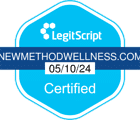Dual Diagnosis as defined by the DBSA (Depression and Bipolar Support Alliance) is “… The term used when a person has a mood disorder such as depression or bipolar disorder (also known as manic depression) and a problem with alcohol or drugs. A person who has a dual diagnosis has two separate illnesses, and each illness needs its own treatment plan (DBSA).
In dual diagnosis patients, one illness does not cause the other illness; to be more specific, alcoholism and substance abuse do not necessarily cause a mental disorder, and a mental disorder does not necessarily cause substance abuse. However, one illness may augment the effects of the other, meaning that substance abuse may heighten the effects of one’s mental disorder, and one’s mental disorder may increase the use of mind-altering substances as a coping mechanism.
Dual diagnosis is very common among substance abusers, as will be discussed in the dual diagnosis statistics section. Fortunately, a well-rounded, individualized treatment program will help patients address both their behavioral health and their issues with substance abuse in an effort to develop healthy coping mechanisms for each illness.
Remember, mood disorders and substance abuse are not weaknesses or character flaws, behavioral health issues and substance abuse are treatable illnesses. You are not a bad person for abusing alcohol and drugs nor are you a bad person for exemplifying behavioral health issues. You will get better if you get the help that you need.
Dual Diagnosis Statistics
According to NAMI (National Alliance on Mental Illness), dual diagnosis patients are more common than one might think.
- Approximately 30% of individuals living with behavioral health issues also exemplify issues with substance abuse
- 50% of individuals living with severe behavioral health issues utilize substance abuse as a coping mechanism
- 1/3 of alcohol abusers also suffer from behavioral health issues
- 1/2 of drug abusers also suffer from behavioral health issues
These statistics reveal the positive correlation between substance abuse and behavioral health issues and shed light on how predominant behavioral health issues are among the addiction community.
Fortunately, due to the asperity of this situation, many treatment centers have implemented a dual diagnosis track for clients who express concern about behavioral health and substance abuse.
Though these statistics may seem frightening, it is imperative that we state that not all substance abusers are dual diagnosis. Substance abuse is proven to change the personality, demeanor, characteristics, and communication skills of alcoholics and addicts, so you or your loved one may not be a dual diagnosis patient.
In order to determine the behavioral health of each of our patients, we have on-staff nurses, doctors, and an on-staff psychiatrist to diagnosis our clients when appropriate.
Am I Dual Diagnosis?
Self-medication or substance abuse can mask the characteristics of a mood disorder, often causing behavioral health issues to be undiagnosed for long periods of time and exacerbating the cravings for drugs and alcohol in order to subside the effects of mania, anxiety, depression, and the like.
If or when both the mood disorder and substance abuse are addressed with the appropriate treatment program and a holistic, therapeutic approach simultaneously, the chances of a client achieving a lasting recovery from drugs and alcohol are improved drastically.
If you are wondering whether you or your loved one are a dual diagnosis candidate for treatment, you can peruse our list of symptoms below or print out the checklist included below!
The signs of a dual diagnosis patient include but are not limited to the following:
- Feeling sad
- Major changes in appetite and sleep patterns
- Irritability, anger, and rage (often random)
- Increased worry and anxiety on a daily basis
- Increased pessimism or indifference
- Loss of energy or constant exhaustion
- Isolation and lack of motivation for once enjoyed activities
- Recurring thoughts of death or suicide
- Feelings of guilt or worthlessness
- Unexplained aches and pains
- Not able to concentrate or make decisions
Symptoms of Alcohol Dependence
Now that you have addressed potential mood disorder symptoms, it is important that you identify with the other part of dual diagnosis: substance abuse addiction.
You can take a more in-depth addiction qualification quiz on the NCADD (National Council on Alcohol and Drug Dependence) website, or you can review the common symptoms of alcohol dependence summarized from the DBS Alliance website below.
- Strong cravings to drink or use your drug of choice
- Inability to control your drinking or using or the inability to stop drinking or using once you start
- Symptoms of withdrawal once you stop using or drinking
- Built tolerance for alcohol and drugs meaning you constantly need more to get the same effects
- Guilt about how much you drank or used which leads to lying about consumption
- Annoyance when others identify how much you have been drinking or using; defensiveness of your habits
- Using or drinking alone to hide your habits with others
- Not following through with responsibilities or commitments
- Constantly enforcing rules to control your drinking or using in order to decrease the amount you drink or use
- Taking risks with your life or others’ lives such as driving under the influence
- Drinking or using so much that you enter into a blackout and are unable to remember what you did
If you have experienced these symptoms of alcohol dependence or you have observed your loved one exemplifying these symptoms, you may be experiencing alcohol dependence.
We treat alcoholism at New Method Wellness and are happy to help you or your loved one find sobriety and long-lasting recovery.
Common Dual Diagnosis
Dual diagnosis comes in all shapes and sizes. There is no one-size-fits-all when it comes to addressing behavioral health concurrent with substance abuse.
The most common mental illnesses addressed with a dual diagnosis program are:
- Mood disorders
- Anxiety disorders
- Personality disorders
- Eating disorders
Mood disorders are characterized by a severe shift in the mood of the patient. Common mood disorders are major depressive disorder, bipolar disorder, persistent depressive disorder, and SAD (seasonal affective disorder).
Anxiety disorders are characterized by long-lasting spouts of anxiety, which generally get worse over time. Generally, anxiety disorders interfere with the patient’s ability to live their day-to-day life. Common anxiety disorders are generalized anxiety disorder, panic disorder, and social anxiety disorder (social phobia).
Personality disorders are characterized by sporadic but long-lasting patterns of thought and behavior that interfere with the patient’s ability to function properly. Common personality disorders are borderline personality disorder, multiple personality disorder, narcissistic personality disorder, obsessive-compulsive personality disorder, and schizoid personality disorder.
Eating disorders are characterized by a psychological disorder causing abnormal eating habits.
Before you self-diagnose, be sure to take note of any abnormalities in your or your loved one’s daily function, and present them to your therapist, doctor, or your prospective treatment center.
Feel free to call us for any questions you might have regarding the treatment of dual diagnosis patients.
How is Dual Diagnosis Treated?
Dual diagnosis is treated by separating the mental disorder from the substance abuse addiction.
Both the mental disorder and the substance abuse addiction must be treated separately, with complete treatment plans for both issues.
Each dual diagnosis treatment plan at New Method Wellness is different, as each client needs an individualized treatment plan for the best results of long-lasting recovery.
Once the mental illness is identified by our on-staff psychiatrist, the therapist is notified, and a therapy plan is determined based on initial information provided by the client during their intake process.
As the 30, 60, or 90-day treatment plan progresses the client’s individual needs are established and their treatment plan is further individualized.
If you have any concerns regarding our dual diagnosis treatment program at New Method Wellness, please feel free to give us a call.







